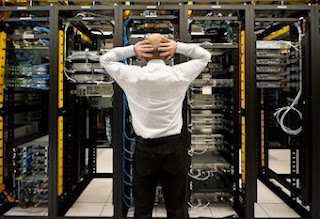The storage needs of consumers have evolved over the years as technology has created a need for faster, affordable solutions. Arrays have long been the storage method of choice, but these devices add bulk, taking up room in data centers as they struggle to keep up.

For a solution, technology professionals needed to look no further than flash memory, which has been used in everything from smartphones to digital cameras for years. With flash memory, information can be erased and rewritten in blocks, which significantly speeds up the process. Additionally, flash memory takes up less space, can be used in much smaller form factors than traditional memory, are more agile than USB, leading to its growing popularity in the IT industry.
Flash memory in storage
Around the turn of the century, flash allowed manufacturers to create a small storage stick that would replace optical discs for consumer storage needs. These “flash drives” occupied much of the first decade of the century, but as cloud computing has become more popular, consumers are more likely to turn to a service like Dropbox or Google Drive to move files from one device to another.
At the enterprise level, however, storage needs still exist. Businesses are interested in shrinking data center sizes, as well as being able to access files at lightning-fast speeds. By attaching flash memory devices to PCI Express (PCIe) expansion buses, businesses are equipped to access network storage options that are dense, high performing and cost effective.
Business is changing
Corporations like Facebook and Google now utilize flash memory-powered PCIe to meet the demands of end users without frustrating slowdowns and outages. In addition, businesses are seeking out solutions like Dell’s dense storage options to improve upon current operations while also reducing data center space. Innovative approaches like those taken by Dell are revolutionizing the industry, opening up flash storage options for enterprises of all sizes.
Experts have noted the shift toward flash storage in companies. Hard disk drive (HDD) shipments are shrinking as businesses look to flash storage as a replacement for aging systems. This, coupled with the trend toward cloud services providers, has the industry expecting enterprise flash storage to become a big part of 2014. This is good news for environmentalists, since flash storage is often more compact and therefore reduces a data center’s carbon footprint.
Preparing for change
It’s important that the IT decision makers in an organization have an understanding for how flash memory works. This goes beyond simply understanding the mechanics of how information is written and erased to include how a flash-powered drive will impact overall network performance. Performance is a top concern for organizations today, with 82 percent of respondents surveyed listing it as the main consideration in making network changes. Respondents also acknowledged that enterprise flash storage will power the vast majority of organizations within the next year.
Many consumers don’t realize the degree to which flash memory impacts their daily lives. But businesses are now gaining from the benefits of this technology, as well, and soon it will appear in even more data centers around the world.
What a post this is for eye surgery! I really see this site and hope there is the best information put on perfectly. Optical Express I have been wearing specs since my teens and the thought that I might never require them again is alien to me, yet that is unequivocally what appears to be going on – as you read this I am recuperating from laser eye surgery.
ReplyDelete